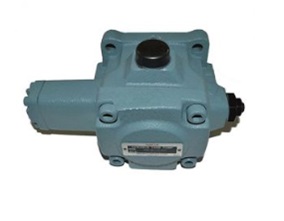When NACHI vane pump is in use, most of them need to be matched. What are the advantages of NACHI vane pump when matching variable frequency motor? What are the points for attention? We all know that when NACHI vane pump transports high viscous media, it is often necessary to slow down the actual flow of NACHI vane pump by manual or automatic speed regulation to meet the production needs of the process. How to set up the frequency conversion NACHI vane pump and what specific problems should be paid attention to? Here is A&S Hydraulic Co., Technical Engineer Kevin of Ltd Machining Center. :

First. Generally speaking, the general ways to achieve speed reduction include gear speed regulating motor, gear box speed reducing, frequency conversion motor, manual stepless speed regulating motor, electromagnetic debugging, etc. The frequency conversion motor adopts AC speed regulating mode of "special frequency conversion induction motor + frequency converter", together with electric automatic control system, which greatly improves the degree of mechanical automation and production efficiency and saves energy. Source, improve product qualification rate and product quality, increase power system capacity accordingly, miniaturize equipment, increase comfort, frequency conversion speed regulation has become the mainstream speed regulation program, can be widely used in the pump industry CVT transmission.
Second. Nowadays, NACHI vane pump, high viscosity Roots pump, single screw pump and vacuum discharging gear pump with variable frequency motor are common in deceleration devices. For customers who require fixed flow of NACHI vane pump, it is recommended to choose gear reducer motor and cycloid pinwheel reducer motor. If customers require that the flow of NACHI vane pump be adjustable in the transportation process,
Thirdly, it is suggested to choose pole-less speed-regulating motor or variable-frequency motor. At the same time, when selecting variable-frequency motor, the power requirement of the motor needed to be selected is higher than that of the standard configuration, so as to prevent the motor from being damaged by the instantaneous starting current when the variable-frequency motor drives the NACHI vane pump to start.
Fourth, the application characteristics of frequency conversion motors:
1. Insulation level, generally F or higher, should be strengthened for ground insulation and turn insulation, especially considering the ability of insulation to withstand impulse voltage.
2. For the vibration and noise of motor, we should fully consider the rigidity of motor components and the whole, and try our best to improve its natural frequency to avoid resonance with various force waves.
3. Cooling mode: Forced ventilation cooling is generally adopted, that is, the main motor cooling fan is driven by an independent motor.
4. Measures to prevent shaft current should be taken. Bearing insulation measures should be adopted for motors with capacity exceeding 160KW. It is easy to produce asymmetric magnetic circuit and axial current. When the current generated by other high-frequency components is combined, the axial current will increase greatly, which will lead to bearing damage. Therefore, insulation measures should be taken generally.
5. When the speed of constant power variable frequency motor exceeds 3000r/min, special grease with high temperature resistance should be used to compensate for the increase of bearing temperature.
